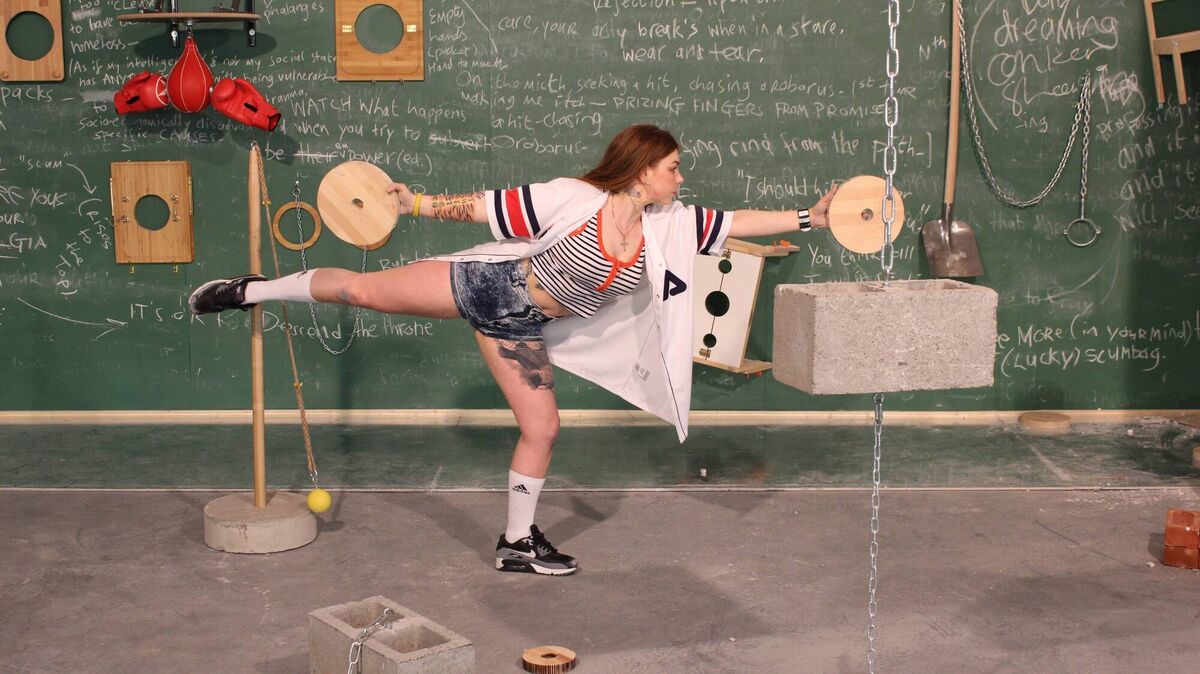'It takes years to recover from homelessness': Elayne Harrington on getting her art career on track

Elayne Adamczyk Harrington as part of her MissElayneous 2020 project. Picture: Jacek Snochoswki
"How many folks who read the Irish Arts Review are looking for a bed through the Dublin Regional Homeless Executive?" asks sculptor and hip hop/poetry performer, Elayne Adamczyk Harrington. She is one of four artists who have just been awarded residencies at the Dean Arts Studio on Dublin's Harcourt Street in a partnership with IMMA (Irish Museum of Modern Art) and The Dean Hotel.
Thirty-three year old Harrington, who is married to a Polish man, was homeless while in sixth year at school, living in a women's transitional house. Two years after that, she lived in a YMCA premises.
After going on to live in rented accommodation until her mid-twenties, Harrington was made homeless when her landlord decided to sell his property. Her most recent bout of homelessness went on from Christmas 2013 to March 2016. During this time, Harrington stayed with friends, in hostels and on the street.
Being on the street "meant staying awake all night, walking the length and breadth of the city, or sitting in internet cafes - and any places I wasn't moved on from”.
Harrington carried all her property in her bodhrán case, slung over her shoulder. "I remember distinctly at one point having a Dylan Thomas collection of poems, a miniature kettle and a hot water bottle in there. I became very resourceful but it was very dangerous and destructive and has had long term implications. It takes years to recover from homelessness - if you ever fully do."
While living in Daisy House, the staff there supported Harrington's ambition to pursue third level education, beyond PLC courses. She was accepted to NCAD (National College of Art and Design) through the Access higher education programme. In 2019, she graduated in fine art, having spent her Erasmus year at the University of Arts in Poznan, Poland. Harrington is currently studying for a Masters in education at NCAD.

Harrington is currently working on a multi-media project ('In Between the Lines') based on the experience of homelessness in Dublin. it will consist of video and audio material, text-based artworks and a new version of 'Transients', an installation that Harrington presented at the NCAD Sculpture Exhibition in 2017. 'Transients' consisted of a car that was lived in with the audio of a call being made to Homeless Freephone, a Dublin City Council (DCC) service which arranges accommodation for service users.
"How many standard gallery-goers do you think would recognise the audio installation element with the DCC free phone music playing while on hold? There's a chasm of division between who gets to see, interpret, critique and create art - and it's down to privilege. So, when I made 'Transients', it was not to alienate the middle class viewer, although it could seem that way.
"It was more to emphasise their ignorance of the detail of working class experience by showing them things they can interpret but won't understand. Because they haven't been transient, they haven't been told to move on. Nor do they know what a wet house is and they don't understand access and eligibility the way that working class and underclass folk do."
As a working-class artist, Harrington points out that it is always middle-class teachers who seem to be evolving in accordance with higher education calls for diversification.
“But it is our culture and community that should bolster its own truth, without the need of a more qualified executor to facilitate our learning. That's why I employ boxing culture in my work quite a bit. It is a working-class sport. It has autonomy and character and the capacity to transform in ways that can only be appreciated by those who understand its meaning and value."
Art is important to Harrington because it's a way of communicating. She says it is "a means to serve others. For me, it is a prayer, a dance, a revelation, a silent knowingness... a feeling of being understood and an effort to reach out. It can be a feeble cry or a howl of anguish. it stirs and soothes, it affirms and asks questions. It is an insatiable yearning to love and love more deeply and to be, to belong."
Read More




